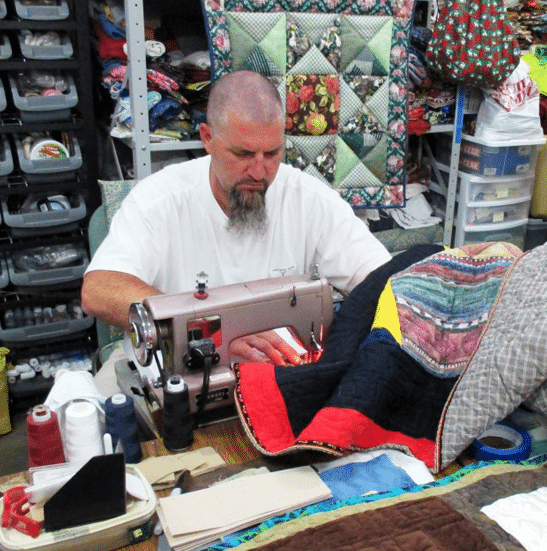Missouri Inmates Sew Custom Quilts for Foster Children

Jim Williams often lies awake in the middle of the night in his prison cell, thinking about his next quilt design. “I’m kind of a perfectionist,” Williams told St. Louis Public Radio. “I’ll wake up at 2:30 in the morning and think, ‘That color really isn’t going to work.”
There is a small group of volunteers at South Central Correctional Center in Licking, Missouri that spend their days sewing intricately designed, personalized quilts for every foster child in Texas County. The group of seven men relies entirely on donations and meets every day in the prison’s sewing room.
Richard Sanders is one of the more experienced quilters of the group, but never intended to join the program. After visiting the sewing room one day to help fix a broken machine, he realized he wanted to enroll. “It’s just a real peaceful environment,” said Sanders. “These places, the more you stay busy, the better you are.”
Sanders has been incarcerated for over three decades and made hundreds of quilts, sending photos of each one to his elderly mother.
The program offers the inmates a temporary escape and opportunity to engage with the community. To join the group, an inmate cannot have any recent conduct violations on his record.
“You can see the change in their attitude,” said Joe Satterfield, a case manager at South Central who runs the quilting program. “A light flips on like, ‘Oh, this is a new avenue. I can actually be a part of something.”
The project is rooted in restorative justice, which emphasizes community building and rehabilitation. There are many other similar groups, including training shelter dogs and growing vegetables for food banks.
For the sewing group at South Central, the men design quilts for children in the Texas County foster care system with individual children in mind, embroidering their names in each one. For Rod Harney, it is an attempt to let the children know that they have not been forgotten. “You see the names of these kids in foster care; you see a 1-year-old or 2-year-old, and it kind of breaks your heart,” said Harney, who learned to sew in his seventh-grade home economics class. “But that lets us know we’re human still. You can’t express enough how it feels to do it.”
Image source: St. Louis Public Radio


 Previous
Previous
